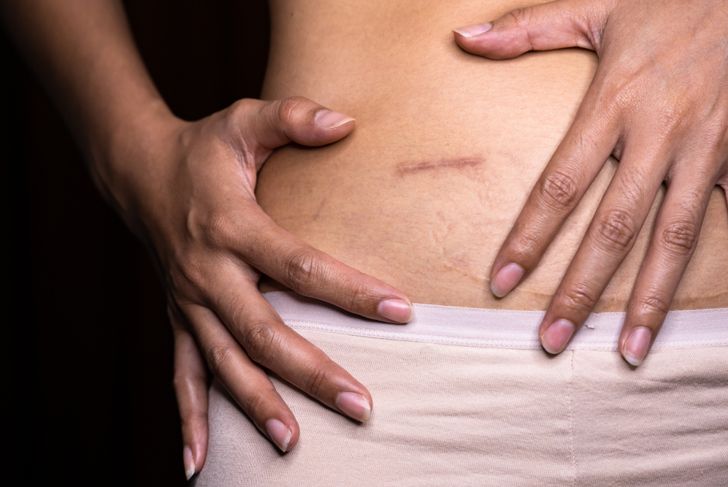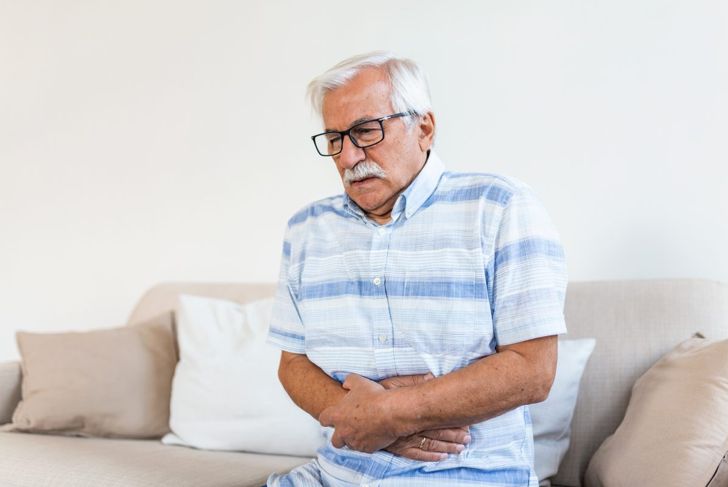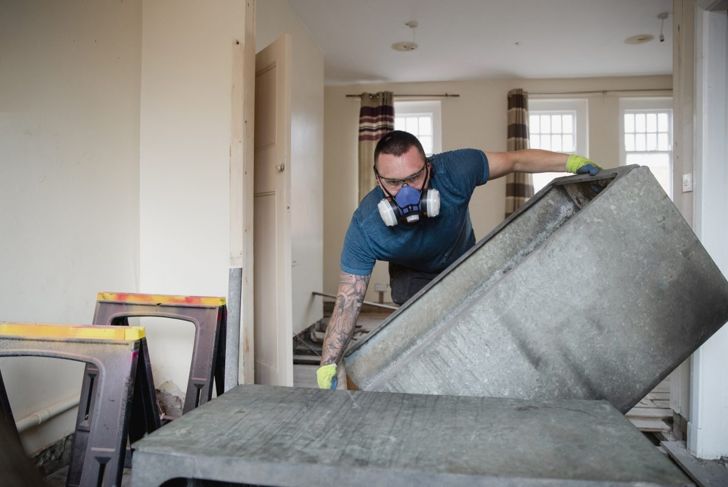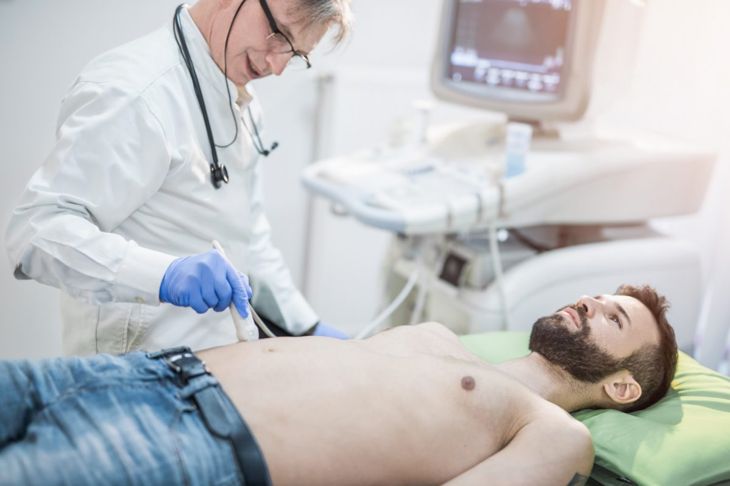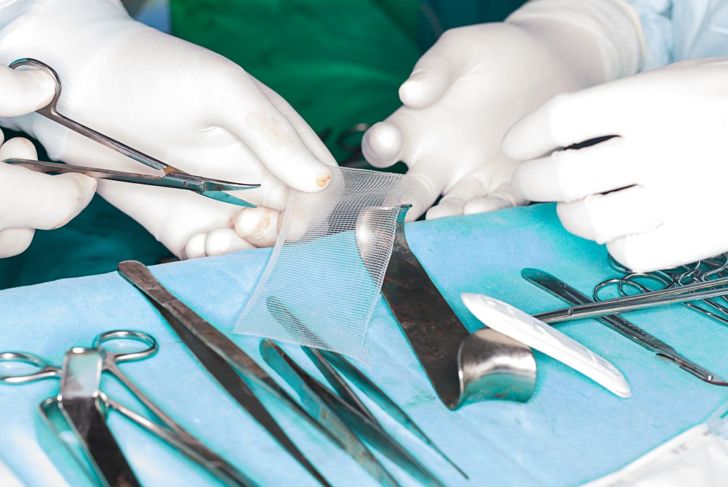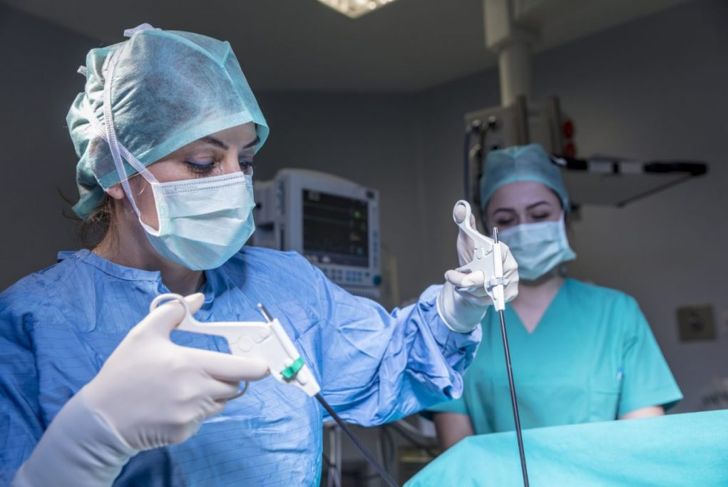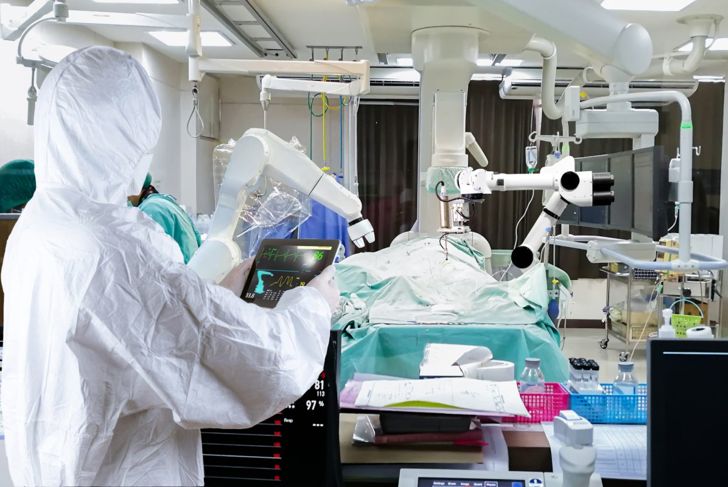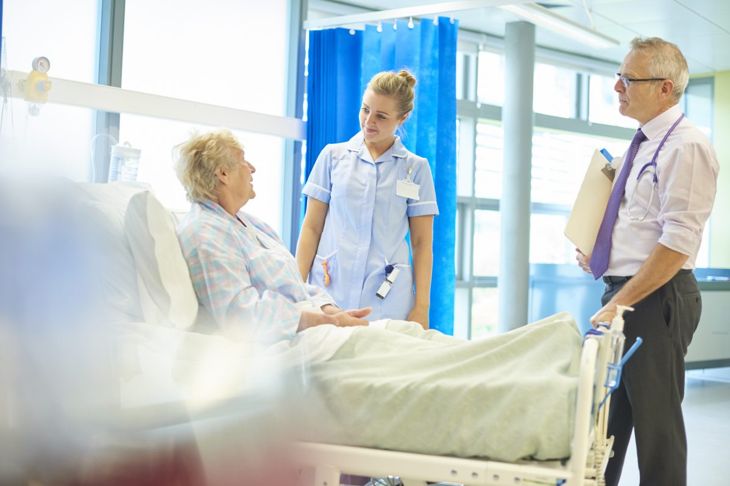A hernia occurs when there is a weak spot in the muscle or tissue, and organ tissue pushes through. A ventral hernia occurs in the muscles lining the abdominal wall along the midline. Abdominal tissue or a part of the intestines pushes through the muscle layer.
Types
There are multiple types of ventral hernias. Epigastric hernias appear between the breastbone and the navel, and umbilical hernias occur at the belly button. Incisional hernias may also occur in people who have had abdominal surgery. About a third of people who have had abdominal surgery will develop a hernia at the site of their scar due to the muscles being weaker at the incision site.
Congenital vs. Acquired
A ventral hernia is also categorized as either congenital or acquired. Most hernias are acquired and result from surgery, trauma, or stress. Congenital hernias are present at birth. Some people live with congenital hernias for years before having them repaired. A congenital diaphragmatic hernia results from a defect in the diaphragm that occurs during fetal development. In most cases, these are isolated, but they can also indicate other congenital defects or syndromes.
How Ventral Hernia Develops
The abdominal wall is composed of multiple layers, including skin, fat, and muscle. Repetitive stress on the abdominal wall and changes in pressure cause small tears in the muscle. In time, the tissue weakens, and a hernia can result. This weakness is exacerbated after surgery as tissue strength never rebounds completely. At best, it is only about 80 percent as strong as it was pre-surgery and 64 percent as strong after a second surgery.
Symptoms
Some people do not experience any symptoms of a ventral hernia in the early stages. The first symptom is usually a visible bulge under the skin. This bulge sometimes disappears when laying down or when applying pressure. It is often tender to the touch, and the pain increases when the pressure in the abdomen is increased, which may occur when having a bowel movement, lifting heavy objects, or standing or sitting in one position for long periods. If part of the tissue or intestines gets stuck in the opening, it cuts off the blood supply, causing tissue death. This is a medical emergency and requires immediate care.
Causes
A ventral hernia results from a weakness in the abdominal wall, but many things can cause this weakness, including diabetes, pregnancy, heavy lifting, constipation, and chronic coughing. Frequent vomiting resulting from eating disorders like bulimia nervosa also weakens the abdominal wall. Obesity is another contributing factor, as excess weight stretches the abdominal connective tissue. Repetitive weight gain and loss are especially damaging.
Diagnosis
Doctors use multiple techniques to diagnose a ventral hernia. They look for physical symptoms, including narrow stools, a lump in the abdomen, abdominal pain, nausea, vomiting, and fever. Blood tests indicate whether there is an infection or blockage, and imaging tests — like CT, MRI, or ultrasound — determine the extent of the hernia and the damage.
Open Hernia Repair
Ventral hernias do not heal themselves. Without treatment, they can worsen and lead to significant complications. In an open hernia repair, the surgeon makes an incision into the abdomen. After the tissue is pushed back through the abdominal wall and into place, the surgeon places mesh over the weak area to prevent a recurrence.
Laparoscopic Repair
Laparoscopic ventral hernia repair is less invasive than an open repair with a much shorter recovery time. This type of surgery involves the surgeon making a small incision into the abdomen and inserting a long, thin tube equipped with a camera and surgical tools. Some researchers believe that laparoscopic repair has a lower chance of ventral hernia recurrence. Although this is a safe procedure, it is technically more difficult than open surgery and has a slightly increased risk of injury.
Robotic Hernia Repair
The third surgical option is a robotic hernia repair. In this procedure, the surgeon does not directly manipulate the surgical instruments. Rather, they sit behind a console and control them. Robotic surgery has many of the same benefits as a laparoscopic surgery, with smaller scars and less pain than open abdominal surgery.
Complications and Prognosis
Recurrence of a ventral hernia after surgical repair varies, but recurrence rates have dropped significantly since the introduction of mesh. Laparoscopic repairs have about a 10 percent recurrence rate; open repairs have between 13 and 18 percent, depending on severity. Prognosis varies and often depends on the initial circumstances of the hernia. Emergency interventions for necrotic bowel (death of part of the intestine due to its blood supply being cut off) have poorer outcomes than planned repairs. Mesh infection is one of the worst complications and requires additional surgery. Patients who are obese or have COPD, a history of abdominal surgery, or infection at the surgical site have poorer outcomes.

 Home
Home Health
Health Diet & Nutrition
Diet & Nutrition Living Well
Living Well More
More
